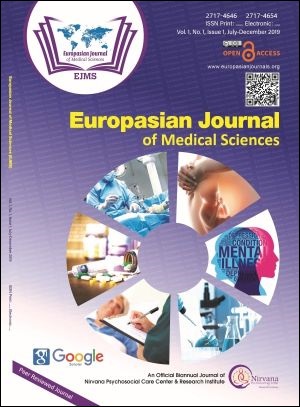Ongoing COVID-19 pandemic: Current Status of Nepal
Keywords:
COVID-19 Pandemic, Coronavirus, Status, NepalAbstract
Emerging and remerging pathogens are worldwide difficulties for public health. Coronaviruses are enveloped positive-sense single-stranded RNA viruses that are dispersed extensively among people, different warm-blooded creatures, and flying creatures that cause respiratory, enteric, hepatic, and neurologic diseases. Six coronavirus species are known to cause human illness like 229E, OC43, NL63, and HKU1, SARS-CoV, and MERS – CoV. SARS-CoV-2 is the seventh member of the coronaviruses that infect humans. Most of the symptoms of COVID-19 are similar to other respiratory illnesses like influenza SARS-CoV, MERS-CoV. Common symptoms of SARS-CoV-2 include fever, chills, muscle aches, diarrhea, and dry cough. On the other hand, severe forms of symptoms include pneumonia, heart failure, and liver failure. Given the high prevalence and wide distribution of coronaviruses, the huge hereditary decent variety and successive recombination of their genomes, and expanding human– creature interface exercises, novel coronaviruses are probably going to develop intermittently in people attributable to visits to cross-species contaminations and incidental overflow events. On January 30, the World Health Organization (WHO) declared the ebb and flow flare-up that began in Wuhan, China as a Public Health Emergency of International Concern, while prescribing against movement or exchange interruptions to and from China. The progressing pandemic of coronavirus ailment 2019 (COVID-19) is brought about by severe acute respiratory disorder coronavirus 2 (SARS-CoV-2). As of 02 May 2020, 3,267,184 instances of COVID-19 have been accounted for in more than 200 nations and regions, bringing about 229,971 deaths.
Downloads
Downloads
Published
How to Cite
Issue
Section
License
The author(s) retain the ownership of the copyrights for their work published in EJMS without any restrictions. Upon submission, the author(s) grants EJMS a license to publish, including to display, store, copy, and reuse the published content.
License to Publish
By submitting a manuscript to EJMS, the author(s) grant the journal a non-exclusive license to:
- Publish and distribute the content in all formats, media, and platforms (both existing and future), while identifying EJMS as the original publisher.
- Reproduce, display, and store the content in both print and online formats, including institutional and digital repositories.
- Translate, adapt, and summarize the work, including reprints, extracts, and abstracts.
- Develop derivative works based on the original content.
- Include the work in electronic databases and provide links to third-party materials.
Creative Commons Licensing
In addition to EJMS’s publishing rights, authors grant third parties the right to use, share, and distribute their work under the Creative Commons Attribution 4.0 (CC BY 4.0) International License. This allows unrestricted use of the content, provided proper attribution is given to the original author(s) and the journal.

